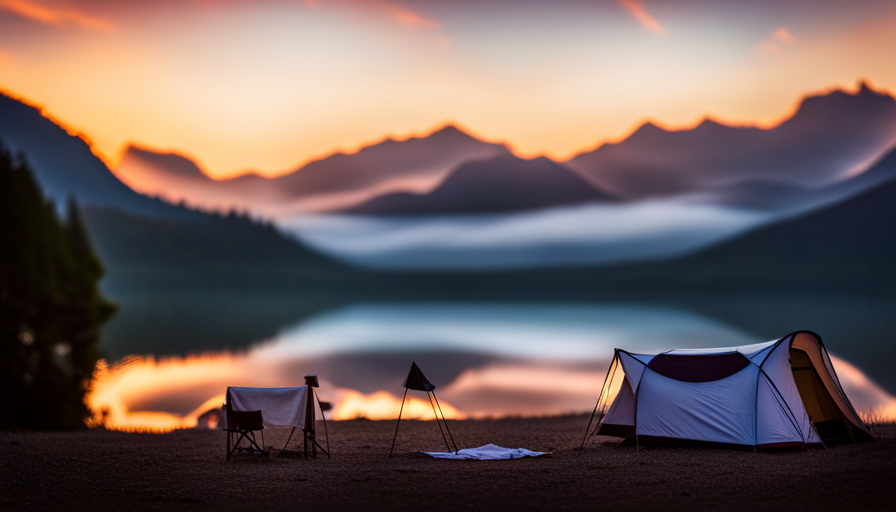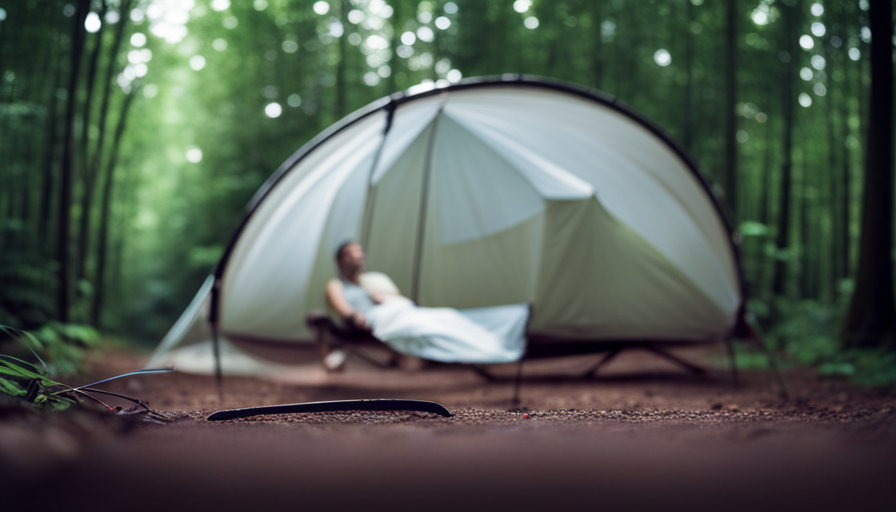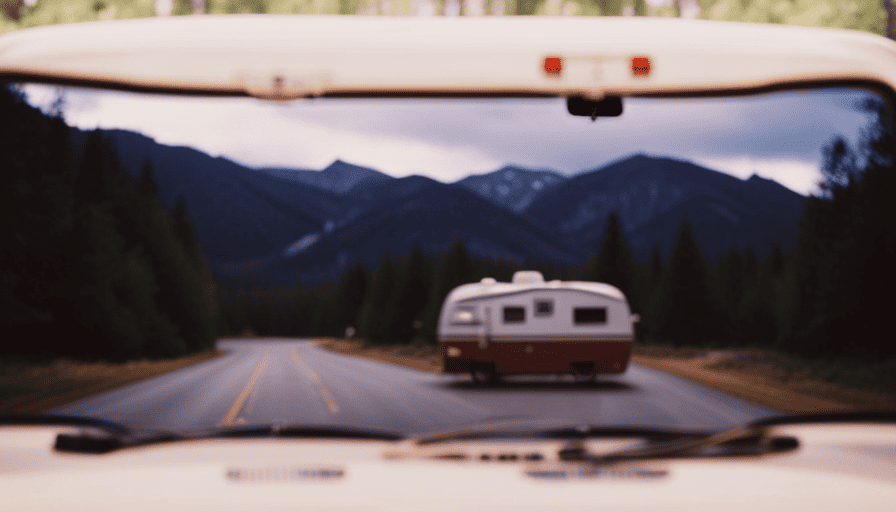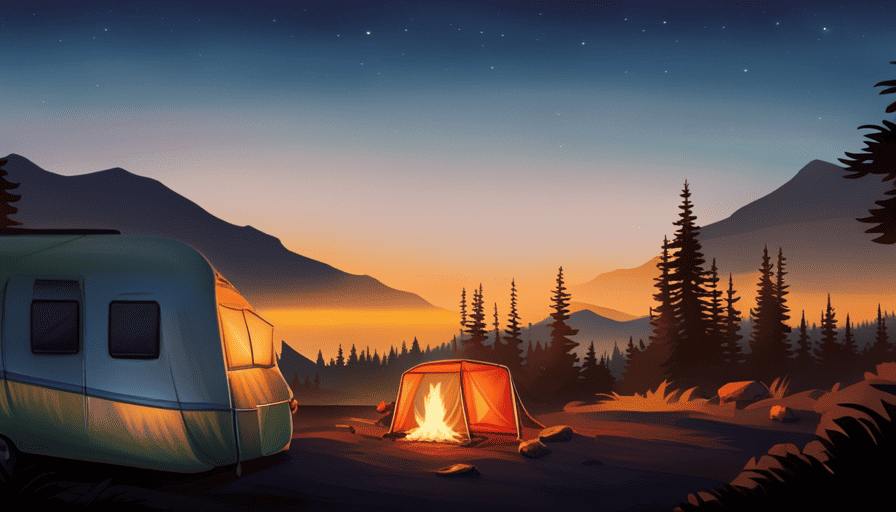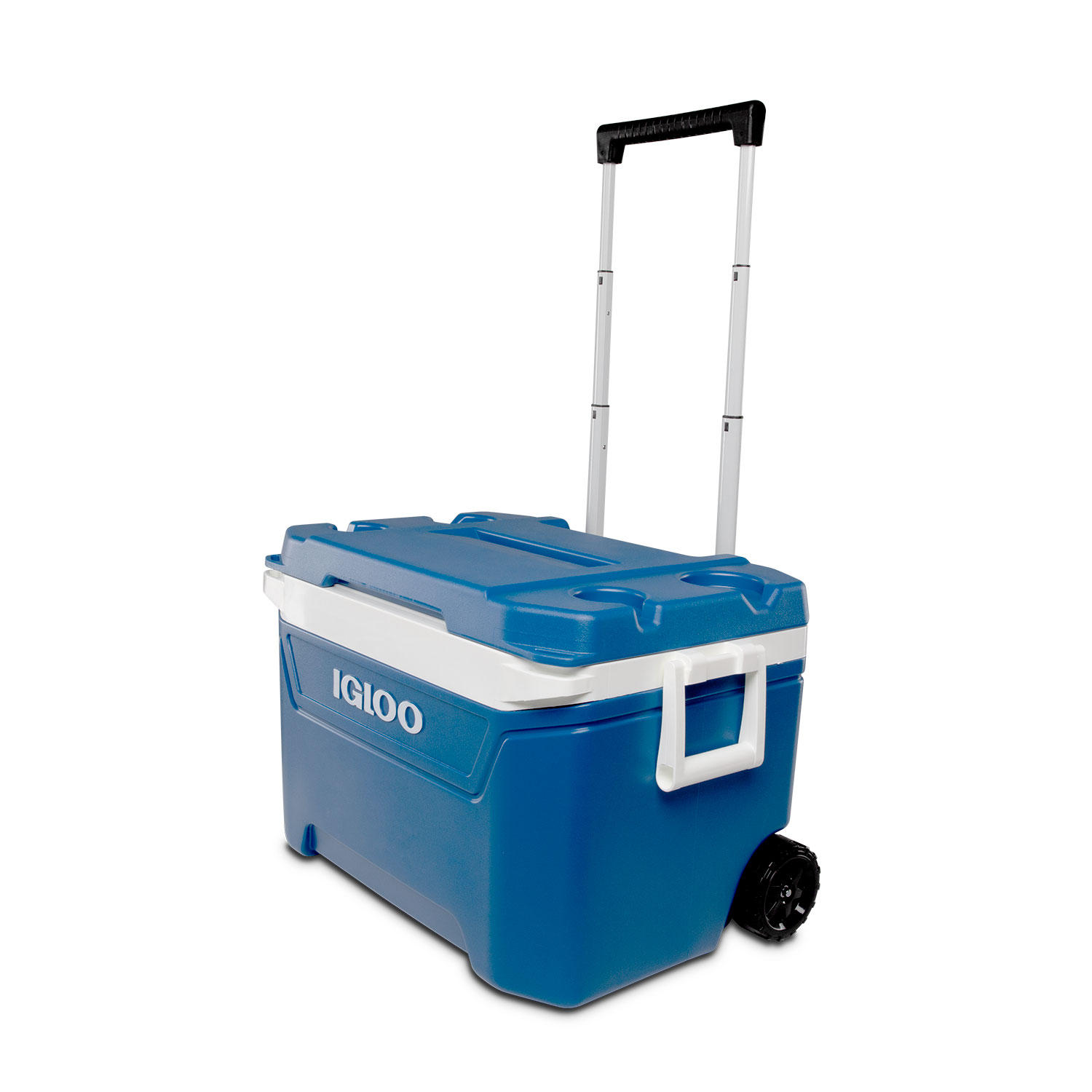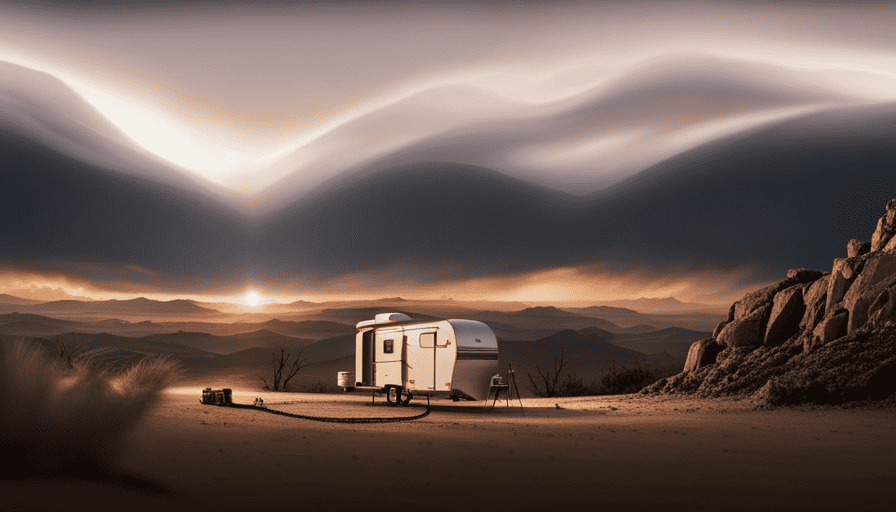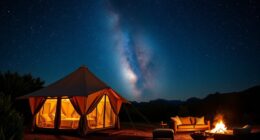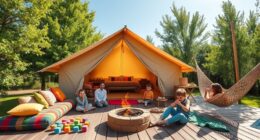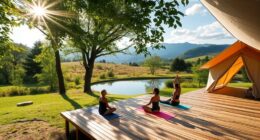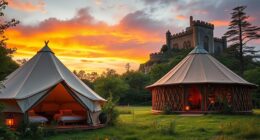Ready to venture out onto the open road and discover the wonders of nature? Imagine this: your camper turns into a personal moving haven, guiding you through stunning sceneries and memorable expeditions. However, before you set out on this adventure, there’s a crucial question to consider: where can we find free parking for our camper?
Just like finding the perfect oasis in a vast desert, we have scoured the land to discover the hidden gems where you can park your camper without breaking the bank. From the majestic National Forests and Grasslands to the vast Bureau of Land Management (BLM) areas, there are countless places where you can park your camper for free and immerse yourself in nature’s embrace.
But the options don’t stop there. Walmart parking lots, rest areas, and even casino and truck stop parking lots offer a convenient respite for weary travelers. So, buckle up and get ready to discover the secret spots where you can park your camper for free, allowing you to create memories that will last a lifetime.
Key Takeaways
- National forests, BLM land, Walmart parking lots, rest areas and welcome centers, casino and truck stop parking lots are some options for free or affordable camper parking.
- Familiarize yourself with camping regulations and rules, as well as store guidelines and parking regulations to ensure a respectful and hassle-free experience.
- Additional options for free overnight camping include public beaches and parks, farms and wineries, national parks and state parks, private campgrounds, and community and church parking lots.
- Maintain cleanliness, show gratitude, and be mindful of your surroundings to foster a positive relationship with communities and leave a positive impression.
National Forests and Grasslands
You can park your camper for free in national forests and grasslands, giving you the opportunity to connect with nature and explore the beauty of these protected areas.
National forests and grasslands are managed by the United States Forest Service and offer a wide range of camping options. These areas are often located near national parks, providing an excellent opportunity to visit multiple scenic locations.
Camping regulations in national forests and grasslands vary depending on the specific area, so it’s important to familiarize yourself with the rules before setting up camp. Generally, dispersed camping is allowed in most areas, which means you can find a spot to park your camper wherever you choose, as long as it is at least 100 feet away from water sources and roads. Some areas may require a permit or have restrictions on campfire use, so it’s always a good idea to check with the local ranger station before your trip.
Now, let’s move on to discussing the next option for free camper parking: Bureau of Land Management (BLM) land.
Bureau of Land Management (BLM) Land
Explore the vast expanse of BLM land, where you can pitch your rig without spending a single dime. The Bureau of Land Management manages over 245 million acres of public lands across the United States, providing ample opportunities for free camping.
From stunning national monuments to vast desert landscapes, BLM land offers a variety of scenic locations for your camper. One of the highlights of camping on BLM land is the chance to visit national monuments. These protected areas showcase the country’s natural and cultural heritage, offering unique camping experiences. Imagine waking up to the breathtaking views of towering red rock formations in Utah’s Grand Staircase-Escalante or marveling at the ancient cliff dwellings in New Mexico’s Gila Cliff Dwellings. These national monuments provide not only incredible camping spots but also opportunities for hiking, wildlife viewing, and stargazing.
If you’re a fan of desert camping, BLM land won’t disappoint. The vast desert landscapes offer solitude, tranquility, and the chance to reconnect with nature. Picture yourself camping under a blanket of stars in Arizona’s Sonoran Desert, surrounded by cacti and other desert flora. Or explore the unique Joshua Tree National Monument in California, where you can witness the surreal beauty of twisted Joshua Trees against a backdrop of rugged mountains.
As you venture further into your search for free camper parking, the next stop on our journey takes us to the convenient world of Walmart parking lots.
Walmart Parking Lots
When it comes to finding a convenient and cost-effective place to park our camper, we’ve discovered that Walmart parking lots can be a great option. Walmart has a camper-friendly policy that allows campers to park overnight for free in many of their locations.
However, it’s important to respect the store’s guidelines and parking regulations to ensure a positive experience for everyone. So, next time you’re in need of a place to park your camper, consider taking advantage of Walmart’s accommodating policy and be sure to follow their rules for a hassle-free stay.
Take advantage of Walmart’s camper-friendly policy
Discover how you can make the most of Walmart’s camper-friendly policy and park your camper for free.
When it comes to camper safety, Walmart provides a convenient and secure option. With their camper-friendly policy, Walmart allows overnight parking in designated areas of their parking lots. This is a great alternative for travelers who are looking for a safe and cost-effective place to rest.
Not only can you save money by not staying at a campground, but you can also take advantage of Walmart’s amenities, such as restrooms and 24-hour security. However, it’s important to respect the store’s guidelines and parking regulations. Be sure to park in designated areas, away from store entrances, and always clean up after yourself.
By following these guidelines, you can enjoy a peaceful night’s sleep while respecting Walmart’s policies.
Respect the store’s guidelines and parking regulations
To ensure a positive experience, it’s crucial to adhere to Walmart’s guidelines and parking regulations while taking advantage of their camper-friendly policy. Respecting these guidelines and practicing proper parking etiquette will help maintain a harmonious relationship with the store and fellow campers. Here are some important things to keep in mind:
- Park only in designated areas indicated by Walmart.
- Avoid parking in fire lanes, handicapped spaces, or areas that obstruct store entrances.
- Keep noise levels to a minimum, especially during nighttime hours.
- Dispose of trash properly and maintain a clean and tidy campsite.
By following these guidelines, not only will you be showing respect for Walmart’s policies, but you’ll also contribute to a positive camping experience for everyone.
Now, let’s move on to exploring rest areas and welcome centers, where you can find free camper parking options.
Rest Areas and Welcome Centers
You can find cozy rest areas and welcoming centers along the highway where you can park your camper for free and enjoy a peaceful night under the stars. These rest areas and welcome centers are often located in scenic spots, such as national forests and grasslands, providing a beautiful backdrop for your camping adventure.
Not only do these areas offer a safe and secure place to park your camper, but they also provide amenities like clean restrooms, picnic areas, and sometimes even hiking trails.
Rest areas and welcome centers are designed to cater to travelers’ needs, ensuring a comfortable and convenient experience. They’re typically well-maintained and monitored by authorities, so you can rest easy knowing that your camper is in a secure location. Additionally, these areas are usually easily accessible from the highway, making them a convenient option for a quick stopover or an overnight stay.
Now, let’s move on to the next section about casino and truck stop parking lots, where you can also find free parking options for your camper.
Casino and Truck Stop Parking Lots
When it comes to finding a convenient and cost-effective place to park our camper overnight, we often turn to casino and truck stop parking lots. These locations not only provide ample space for our vehicles but also offer a range of amenities and security measures to ensure a comfortable stay.
However, it’s important to remember that each establishment may have its own set of rules and requirements for overnight stays, so it’s crucial to verify these beforehand to avoid any surprises.
So, let’s explore the benefits and considerations of utilizing these parking lots for our camper needs!
Utilize the amenities and security offered by these locations
Take advantage of the perks and peace of mind provided by these camper-friendly spots, where you can park for free and enjoy top-notch amenities and security.
Rest areas and welcome centers are excellent options for parking your camper overnight. Not only do they typically offer ample parking space, but they also provide clean restrooms, picnic areas, and sometimes even playgrounds for the kids. These convenient locations are usually well-lit and patrolled by security personnel, ensuring a safe and comfortable stay.
Additionally, casino and truck stop parking lots can be another great choice. These places often have designated areas for campers, allowing you to park for free while enjoying the convenience of nearby restaurants and entertainment options. However, it’s important to verify any specific rules or requirements for overnight stays at these locations to ensure a smooth and hassle-free experience.
Verify any specific rules or requirements for overnight stays
Make sure to check out the specific rules and requirements for overnight stays at these locations to ensure a worry-free and enjoyable experience. It’s important to verify any specific requirements in order to ensure compliance with the rules.
Some places may have restrictions on the length of stay, while others may require reservations or permits. Additionally, certain locations may have specific guidelines regarding quiet hours, waste disposal, or even the types of vehicles allowed.
By taking the time to familiarize ourselves with these rules, we can ensure a smooth and hassle-free stay. Once we’ve verified the specific requirements, we can confidently plan our overnight stay at these locations.
Now, let’s move on to our next destination – public beaches and parks.
Public Beaches and Parks
When it comes to finding the perfect spot to park our camper for free, public beaches and parks are a great option. Not only do we get to enjoy picturesque views and beachside camping opportunities, but we also have the chance to immerse ourselves in nature and make lasting memories.
However, it’s important to check for any local ordinances or seasonal restrictions to ensure we’re following the rules and regulations of the area. So, let’s grab our sunscreen and beach towels, and get ready to embark on a camping adventure by the water!
Enjoy picturesque views and beachside camping opportunities
To fully experience the beauty of beachside camping with breathtaking views, you can totally park your camper for free at these amazing locations.
-
Public Beaches: Many public beaches offer beachside camping opportunities where you can park your camper right by the shore. Imagine waking up to the sound of crashing waves and stepping out of your camper to see the sun rising over the horizon. It’s a truly magical experience that allows you to connect with nature in an intimate way.
-
Picturesque Parks: Some parks also provide beachside camping spots that offer stunning views of the surrounding landscapes. Picture yourself sitting by a campfire, watching the sunset paint the sky with vibrant colors while being surrounded by lush greenery. These parks often have well-maintained facilities and amenities to ensure a comfortable stay.
When planning your beachside camping adventure, don’t forget to check for any local ordinances or seasonal restrictions. These guidelines will ensure that you have a smooth and hassle-free experience while respecting the environment and local regulations.
Check for any local ordinances or seasonal restrictions
Before embarking on your beachside camping adventure, it’s crucial to be mindful of any local ordinances or seasonal restrictions that may impact your experience.
Local parking regulations vary from place to place, so it’s important to do your research ahead of time. Some areas may have designated parking areas for campers, while others may require permits or have time limits for parking.
Additionally, it’s essential to be aware of any seasonal camping restrictions that may be in place. These restrictions can include limits on the number of days you can camp in a certain area or specific dates when camping is not allowed.
By familiarizing yourself with these regulations, you can ensure a smooth and hassle-free camping experience.
Now, let’s move on to exploring the wonderful opportunities for camping at farms and wineries.
Farms and Wineries
Check out farms and wineries in your area where you can park your camper for free and enjoy the scenic views while sipping on delicious wine or sampling fresh produce. Here are some alternative camping options to consider:
-
Green Acres Farm: Nestled in the heart of the countryside, this charming farm offers a serene camping experience. Park your camper amidst rolling green fields and wake up to the sound of chirping birds. Take a leisurely stroll through orchards and pick your own apples or strawberries.
-
Sunset Vineyards: Set up camp among the rows of lush grapevines and watch the sun set over the picturesque vineyard. Enjoy a wine tasting experience where you can sample a variety of award-winning wines produced on-site.
-
Harvest Haven: Escape the hustle and bustle of city life and immerse yourself in the peaceful ambiance of this organic farm. Park your camper under the shade of towering trees and indulge in farm-fresh meals prepared with seasonal ingredients.
-
Meadowview Winery: Experience the beauty of nature while camping at this family-owned winery. Wander through the wildflower meadows and enjoy a picnic by the tranquil pond. Don’t forget to try their signature honey wine!
By exploring these farms and wineries, you can enjoy a unique camping experience while supporting local businesses.
Now, let’s move on to the next section and discover more camping options provided by public land management agencies.
Public Land Management Agencies
While it may seem challenging to find affordable camping options, public land management agencies offer a variety of opportunities for outdoor enthusiasts to explore. National parks and state parks are among the top choices for campers looking to enjoy the beauty of nature without breaking the bank.
National parks are renowned for their stunning landscapes and abundant recreational activities. Many of these parks have designated camping areas where you can park your camper for free or at a minimal cost. These sites often provide basic amenities such as restrooms and picnic tables, ensuring a comfortable camping experience.
State parks also offer excellent camping options for those seeking a budget-friendly adventure. These parks are typically well-maintained and offer a range of amenities, including fire pits, hiking trails, and even swimming areas. With their diverse landscapes and natural beauty, state parks are a great option for campers looking to immerse themselves in the great outdoors.
As you explore these public land management agency options, keep in mind that there are also private campgrounds with free options available. These campgrounds often offer a limited number of free campsites, so it’s essential to plan ahead and arrive early to secure a spot.
Transitioning to the next section about private campgrounds with free options, you’ll find even more choices for your camping adventure.
Private Campgrounds with Free Options
Explore the hidden gems of private campgrounds that offer complimentary campsites, allowing you to fully indulge in the joy of camping without spending a dime. These private campgrounds understand the allure of being surrounded by nature and offer free camping options for adventurers like us.
Here are some of the best private campgrounds that provide free campsites:
-
Serene Pines Campground: Nestled in the heart of the mountains, this campground offers breathtaking views and a tranquil atmosphere. With their free camping option, you can pitch your tent or park your camper without worrying about fees.
-
Lakeside Retreat: This private campground is a paradise for water lovers. Situated near a picturesque lake, it provides free campsites with easy access to swimming, fishing, and boating activities.
-
Rustic Haven Campground: If you’re looking for a rustic experience, this campground is perfect for you. Surrounded by towering trees and scenic trails, it offers free campsites that make you feel at one with nature.
These private campgrounds are just a glimpse of the many options available to campers seeking free camping experiences. However, if private campgrounds aren’t your cup of tea, don’t worry! There are also other alternatives, such as community and church parking lots, where you can park your camper for free.
Community and Church Parking Lots
When looking for free overnight parking options for our camper, one great option is community and church parking lots. These spaces are often welcoming to travelers and provide a safe place to park for the night.
It’s important to show gratitude for their hospitality by respecting the space and leaving it clean, so that future travelers can also benefit from this free option.
Seek out welcoming communities for overnight stays
Look for friendly communities where you can park your camper overnight for free, and don’t worry about feeling unwelcome because many towns actually appreciate the economic boost that travelers like you bring to their local businesses.
When seeking out welcoming communities for overnight stays, consider exploring national parks that offer overnight parking options. These parks often have designated areas where you can park your camper and enjoy the beautiful surroundings.
Additionally, some towns have specific policies in place to accommodate overnight campers, allowing you to park in designated areas within the town limits. Look for signs or ask locals for recommendations.
Remember, it’s important to show gratitude by respecting the space and leaving it clean. By doing so, you contribute to the positive reputation of camper travelers and make it easier for others to enjoy these free parking opportunities.
Show gratitude by respecting the space and leaving it clean
Make sure to express your appreciation by treating the space with respect and leaving it clean. When parking our camper for free in welcoming communities, it’s important to show gratitude for the opportunity.
One way to do this is by maintaining cleanliness. Be mindful of your surroundings and clean up after yourself, whether it’s picking up trash or wiping down surfaces. By doing so, you’ll not only leave a positive impression but also ensure that others can enjoy the space as well.
Remember to bring garbage bags and cleaning supplies with you, so you can easily dispose of any waste and keep the area tidy. Showing appreciation and maintaining cleanliness will help foster a positive relationship between campers and the communities that generously offer free parking spots.
Frequently Asked Questions
Are there any restrictions or time limits for parking my camper in National Forests and Grasslands?
There are certain restrictions and time limits for parking campers in national forests and grasslands. When it comes to national forest camping, it’s important to be aware of the camping regulations in place.
These regulations vary depending on the specific forest or grassland you plan to visit. Some areas may have designated camping spots with time limits, while others may allow dispersed camping with certain restrictions.
It’s always a good idea to check with the local forest service office or visit their website for more information.
Can I stay overnight in Bureau of Land Management (BLM) Land with my camper?
Yes, you can absolutely stay overnight on Bureau of Land Management (BLM) land with your camper. BLM land offers a variety of camping opportunities and has specific regulations for overnight camping. Some of the best BLM land for camping with a camper includes areas like national monuments, wilderness areas, and recreation areas.
These locations often provide beautiful scenery, ample space, and a chance to immerse yourself in nature while adhering to the overnight camping regulations on BLM land.
Is there a specific policy or procedure for parking my camper overnight in Walmart parking lots?
Yes, there are specific policies and procedures for overnight parking of campers in Walmart parking lots. Walmart allows RVs and campers to park overnight in many of their locations, but it’s essential to follow their guidelines. These may include obtaining permission from the store manager, parking in designated areas, and adhering to any time limits or restrictions. It’s always a good idea to check with individual Walmart stores for their specific policies before parking your camper overnight.
Are there any amenities available for campers at rest areas and welcome centers?
Rest areas and welcome centers offer a range of amenities for campers to enjoy. You’ll find clean restrooms and showers, convenient picnic areas, and even playgrounds for the kids to stretch their legs. Safety is a top priority, with well-lit parking lots and security patrols. Some locations even have RV dump stations and potable water available.
So, whether you’re looking to freshen up, grab a bite to eat, or simply take a break from the road, rest areas and welcome centers have got you covered.
Are there any fees or reservations required to park my camper in casino and truck stop parking lots?
No, there aren’t usually any fees or reservations required to park your camper in casino and truck stop parking lots. These parking lots often provide convenient options for overnight stays, as they’re designed to accommodate larger vehicles like campers.
However, it’s important to note that some parking lots may have restrictions on how long you can stay, so it’s always a good idea to check with the specific casino or truck stop beforehand.
Are There Any Legal Places to Park a Camper for Free?
Are there any legal parking options for free camper available? Finding a free place to park a camper legally can be a challenge. However, some areas allow overnight parking in designated spots or offer free camping areas. Research local regulations and consider asking fellow campers or online communities for recommendations.
Conclusion
In conclusion, we’ve discovered a plethora of options for parking our campers for free. From the tranquil embrace of National Forests and Grasslands to the welcoming lots of Walmart and rest areas, our choices are abundant.
We can even find solace amidst the excitement of casino and truck stop parking lots. Farms and wineries beckon us with their rustic charm, while public land management agencies offer hidden gems. And let’s not forget the generosity of private campgrounds, community spaces, and church parking lots.
The possibilities are endless, so let’s hit the road and find our perfect spot!

